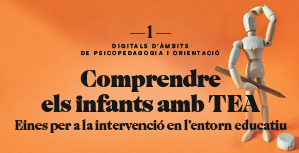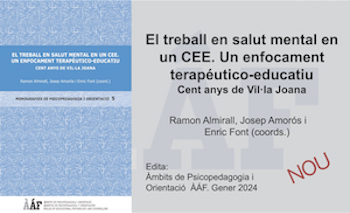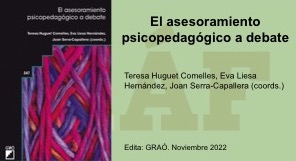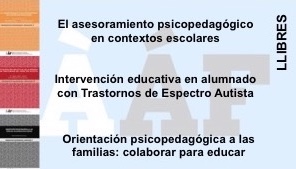Psychopedagogical and therapeutic treatment for autistic children: an experience about psychopedagogical and health services working together
Abstract
Autism is an evolutionary disorder carrying with serious, obvious, persistent and specific disturbances in perception, communication, language and social interaction. Families, doctors and teachers send more and more children with autistic symptoms to the assessment services, so that a light increasing about autistic spectrum disorders diagnosis is perceptible nowadays. Providing treatments to improve the autistic children’s competence, within scholar and homely limits, it’s been absolutely essential and caused both teams, EAP and CSMIJ, a successful collaboration. In order to achieve this aim we need to face up the diagnosis and agree about the therapeutic treatment. It’s necessary that autistic children can improve learning with social skills training and know how to communicate and speak, if possible. Working both teams ensemble, with unitary criteria and similar therapeutic proposals is a great helpful for the teachers and the autistic children’s families too.
References
Fombonne, E. (1999). The epidemiology of autism: a review. Psychological Medicine. 29,769-786.
Garanto, J.; Paula, I. (2003): L’alumnat amb trastorns generalitzats del desenvolupament: l’espectre autista i les psicosis. Barcelona. Generalitat de Catalunya. Documents d’educació Especial n.16.
Gillberg, C., Steffenburg, S. & Schaumann, H, (1991). Is autism more common now than ten years ago?. British Journal of Psychiatry 158, 403-409.
Howlin, P., & Moore, A. (1997). Diagnosis of autism: A survey of over 1.200 patients in the U.K. Autism, 1, 135-162.
LeCouter, A., Lord, C., Rios., P., Robertson, S., Holdgrafer, M., McLennan, J., & Rutter, M.(1989). Autism Diagnostic Interview: A semistructured interview for parents and caregivers of autistic persons, Journal of Autism and Developmental Disorders, vol. 19, nº3, 363-387.
Lord, C. (1995).Follow-up of two-year-olds referred for possible autism. Journal of Child Psychology and Psychiatry, 36, 1365-1382.
Lord, C., Rutter, M., Goode, S., Heemsbergen, J., Jordan, H., Mawhood, L., & Schopler, E. (1989). Autism Diagnostic Observation Schedule: A standarized observation of communicative and social behavior. Journal of Autism and Developmental Disorders, 24, 659-685.
Ozonoff, S., Cathcart, K. (1998). Effectiveness of a home program intervention for young children with autism. Journal of Autism Developmental Disorders, 28, 25-32.
Rapin, I. (1991). Autistic children: diagnostic and clinical features. Pediatrics, 45, 666-668.
Rivière, A.; Martos, J. (1998): El tratamiento del autismo. Nuevas perspectivas Madrid. Ministerio de trabajo y asuntos sociales. 2a edición.
Rutter, M. (1970). Autistic Children: Infancy to adulthood. Seminars in Psychiatry 2, 435-450.
Rutter, M., Lord, C., & LeCouteur, A. (1994). Autism Diagnostic Interview-Revised: A Revised Version of a Diagnostic Interview for Caregivers of Individuals withPossible Pervasive Developmental Disorders. Journal of Autism and Developmental Disorders, 24, nº5, 659-685.
Sheinkopf, S., Siegel, B. (1998). Home-based behavioral treatment of young children with autism. Journal of Autism and Developmental Disorders, 28, 15-23.
Wing, L. (1993). The definition and prevalence of autism: A review. European Child and Adolescent Psychiatry, 2, 61-74.
Downloads
Published
Issue
Section
License
The authors maintain their copyright and give the right to the first publication of the work to the journal, registered under a Creative Commons Attribution-Non Commercial-NoDerivs license. This license allows others to download the works and to share them with others as long as they credit the author, but it does not allow for any kind of modification or commercial use.















